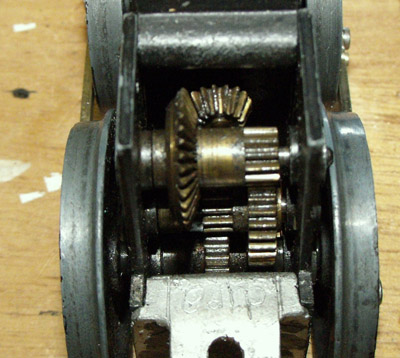History
The LMC and Skinley Drawings
Once again I am indebted to my good friend and fellow Leeds enthusiast Martin Dawes for bringing to my attention a number of the ‘new and wide’ series of drawings which were first listed by the Leeds Model Company in the 1935 catalogue and substantially added to thereafter. These drawings which were all the work of John Skinley, were acquired by Martin as a large ‘job lot’ which also included a few Greenly and LMC prints, suggesting that originally these may have come from the LMC itself. Bearing in mind their age most are in reasonably good condition and as time permits we will publish a supplementary list of the ones held by Martin, so that they may be made available to anyone interested.
One Hundred Years Ago….
I am indebted to Paul Gumbrell for the supply of two copies of the Railway Magazine, December 1922, and January 1923. These feature advertisments from the Leeds Model Company, the December issue of Great Northern Railway Pacific No 1470 ‘Great Northern’. The January advert shows the LSWR Urie 4-6-2T. The photographs replicate those which appear in the LMC 1922/3 catalogue, which is also promoted in the advertisements.
One example of the several surviving LMC GN/LNER Pacifics, (also ‘Great Northern’ see the History section) is held in the Trust Archive. This came from the Hordern collection in Australia, where currently the only known surviving example of the Urie tank resides.
We might suspect the hand of G.P.Keen in placing these adverts. In the same issues of the Railway Magazine are advertisments for Bassett-Lowke model railways, ships and stationary engines.
'The Leeds Model Company 1912 -2012'
This book can only be obtained directly from the Leeds Stedman Trust. If you wish to obtain a copy please use the Contact page on this website. The book is priced at £19.95 per copy plus £3.30 post and packing.
The book (128 pages), with both colour and black and white illustrations and with 24 chapters and 19 appendices, covers every aspect of the company history and products. An accompanying DVD has two video programmes, 'The Leeds Stedman Trust' made for the Gauge 0 Guild by David Peacock and Jack Ray, and 'Augurswell and Great Blessingsby', the Trust layout, made by David Peacock and Chris Pettit. The disc also carries as a CD a high quality photograph of every locomotive and item of rolling stock held in the Trust archive
The LMC ‘Time Machine’
“To the best of my knowledge and experience”. Cautious words which I find myself often having to use in response to yet another enquiry about an LMC product or process. I am always ready to learn more about the company and about Rex Stedman, whose engineering approach to model making never fails to interest and excite me.
Earlier this month I was presented with a very early model of the LNER D10 Director 4-4-0, “Sir Berkeley Sheffield”. The body was originally destined for clockwork drive, but in common with those converted for electric drive the keyhole had be neatly concealed, but the control rod holes remained in the backhead plate. So, step into the time machine back to 1922/3 to explore the mechanism, a very early series 1, with the narrow magnet and rather basic brush holders I had not seen before. The most surprising feature was revealed when I removed the ‘steam-roller’ profile cast iron driving wheels. These were fitted to the 5/32” diameter axles which were standard in the Series 1 mechanisms. I have had plenty of experience with these, and with the necessity to quarter the wheels on the plain axle ends ‘by eye’ when reassembling them. To my astonishment the wheels were keyed to the axles, a tiny key engaging with an equally small slots in the axle and in the back of the wheel. No mention of this feature appears in the catalogues of the time. Re-assembly was easy!
I cannot say how long this system was used, but quite clearly it was dropped whilst cast iron wheels were still in use, some while before the die cast zinc wheels with squared centres fitted onto 3/16” diameter axles were introduced. Clearly cutting the keyways and providing the key were a cost extra on the model which could be eliminated without compromising the model performance even if assembly was not quite so straightforward.
Mansted Foundry Models – another recovery and an update
‘Mansted’ was the play on his name that Rex Stedman in the mid-1920s used primarily for the models he designed and built for G.P.Keen’s K-Lines model railway. In 2011, in the book on the Leeds Model Company we listed the details and known whereabouts of thirteen of the nineteen models which carried the MF plate. Since that listing there have been several developments, including sale of the three locomotives from the collection of Roy Chambers, (RC), to known buyers in the UK, and the recovery of one further K-Lines locomotive, MF102, from France. These changes were detailed in Lowko News February this year and are such that the book list must be updated as follows: MF101, 2-6-0 K-Lines 321 (ex RC) is now in beneficial ownership in the UK, restored and running. Its owner, a skilled engineer, contributed substantially to the restoration of its ‘sister’ model MF102 MF102 2-6-0 K-Lines 322, has been rescued from the Musee du Train France. It was in very poor condition but has been rebuilt and restored. It also in beneficial ownership in the UK, (in company with MF 105, MF108, and the K-Lines Twining Garratt – which was also rescued from France and restored in 2019).
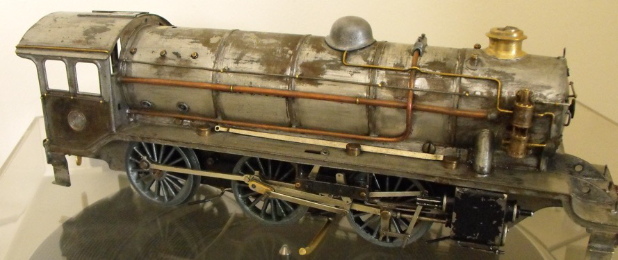 </
</
On the road to recovery above MF 102, and below – recovered!
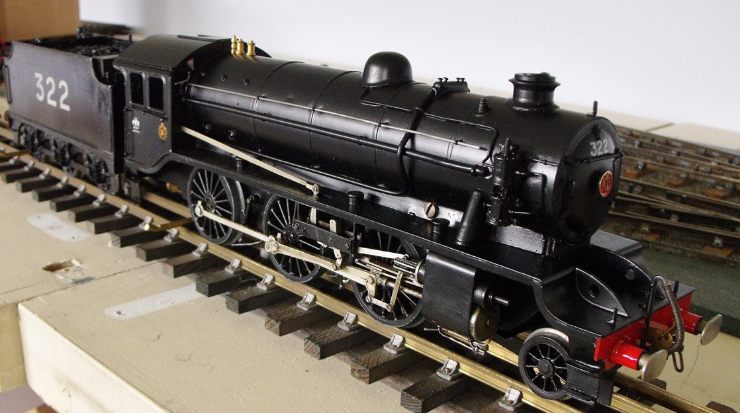 MF103 2-6-0 K-Lines 331 and MF117 4-6-0 K-Lines 313 were purchased from the Chambers collection and are now in beneficial new ownership in the UK, restored and running.
MF103 2-6-0 K-Lines 331 and MF117 4-6-0 K-Lines 313 were purchased from the Chambers collection and are now in beneficial new ownership in the UK, restored and running.
MF105 2-6-0 K-Lines 326 (previously location not known), is in good condition and running in company with MF102 and MF108 as above.
MF106 2-6-0 K-Lines 336 remains in the Trust archive collection with MF118
MF109 the LNER Garratt 2492, remains with the National Railway Museum, but, when last seen, was inconspicuously displayed without credit to Rex Stedman or other information.
MF110 4-6-2 LNER A1 ‘Great Northern’ was repatriated from Australia in 2018 and is currently held in the Trust archive collection (see article ‘Back Home’ in the History section). Its location longer term depends very much on the future of the Horden layout with which, as ‘Sydney’, it was originally sent to Australia.
MF111 2-6-0 LNER K3 ‘ Woolloomooloo’ recovered from a private collector in Australia, restored by the Trust. It was taken back to join MF 112 and MF113 with the Horden Layout in Tasmania.
MF116 4-6-0 K-Lines 312. (previously location not known). The UK owner kindly identified himself following the article in Lowko News.
MF117 4-6-0 K-Lines 313 (ex RC), with MF 103 as above.
There now remain four ‘MISSING’ locomotives, whereabouts unknown:
MF104 2-6-0 K-Lines 332
MF107 4-6-0 K-Lines 311
MF114 0-4-0 Pantry Dockyard No2 from the layout of Mrs Keen.
MF115 0-4-0 from the Hordern layout. This model is most unlikely to be found considering the most difficult circumstances under which ‘Woolloomooloo’ and MF113 were recovered.
Hopefully these, or their fate, may come to light so that the record may be completed. A ‘Great Gathering’ of these unique models might then be arranged, actually or virtually. Owners of the ‘missing’ locomotives may advise the Trust in confidence, their details will not be revealed.
The Leeds Model Company, founded by Rex Stedman in 1912, was after Hornby and Bassett-Lowke the third largest model railway manufacturer in the UK in the years between World Wars 1 and 2.
From modest beginnings the company grew rapidly after 1919, and with finance from G.P.Keen, moved from custom building into mass production of a first series of standardised scale model tank locomotives.
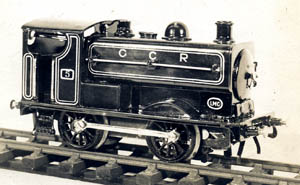 The iconic 0-4-0ST was also introduced at this time, along with other enduring models, the ex GC 4-4-0 ‘Butler Henderson’, and 4-6-0 ‘Sir Sam Fay’. Two locomotives, a Great Western Churchward 4-4-0 County and Pickersgill Class 72 Caledonian 4-4-0 were produced for Bassett Lowke in 1922. The parts and tooling for these were later used to manufacture the LMC GW Mogul and the Pickersgill 0-6-0 goods locomotives. Other models supplied at this time were an LMS Claughton, an LNER (Ex GN) Atlantic, LNER 4-6-2 classes A1 and A2, and a Urie 4-6-2T. Early in 1920 and to reduce production costs, and whilst continuing to supply hand built wooden stock, Stedman developed a pre-grouping range of wagons and coaches using high quality paper lithographs on standardised timber bodies.
The iconic 0-4-0ST was also introduced at this time, along with other enduring models, the ex GC 4-4-0 ‘Butler Henderson’, and 4-6-0 ‘Sir Sam Fay’. Two locomotives, a Great Western Churchward 4-4-0 County and Pickersgill Class 72 Caledonian 4-4-0 were produced for Bassett Lowke in 1922. The parts and tooling for these were later used to manufacture the LMC GW Mogul and the Pickersgill 0-6-0 goods locomotives. Other models supplied at this time were an LMS Claughton, an LNER (Ex GN) Atlantic, LNER 4-6-2 classes A1 and A2, and a Urie 4-6-2T. Early in 1920 and to reduce production costs, and whilst continuing to supply hand built wooden stock, Stedman developed a pre-grouping range of wagons and coaches using high quality paper lithographs on standardised timber bodies. 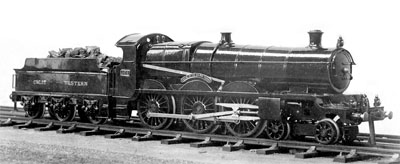 Keen backed out of the LMC in 1924, making way for Hugh Leader of the Bristol Model Company. Significantly with this ‘West Country’ influence, the first GW locomotives, a Star and Castle made their appearance in the catalogue. Stedman and Leader were uneasy partners in the business however, and in 1928, with finance from R.S. Moore, Stedman took over the assets and goodwill of the LMC and for four years ran the company under his own name, R.F. Stedman and Co. Ltd. His fellow directors, Moore and G.M. Simpson, took the company back under the former LMC style in 1932, but continued to develop Stedman’s concepts and designs to update and further extend the product range. The Sentinel Cammell steam railcar ‘Nettle’ and the Brighton Belle Pullman rake of five coaches were produced, along with additions to the private owner wagon range and new ‘button logo’ lithos for the GW coach range. Go to top of page
Keen backed out of the LMC in 1924, making way for Hugh Leader of the Bristol Model Company. Significantly with this ‘West Country’ influence, the first GW locomotives, a Star and Castle made their appearance in the catalogue. Stedman and Leader were uneasy partners in the business however, and in 1928, with finance from R.S. Moore, Stedman took over the assets and goodwill of the LMC and for four years ran the company under his own name, R.F. Stedman and Co. Ltd. His fellow directors, Moore and G.M. Simpson, took the company back under the former LMC style in 1932, but continued to develop Stedman’s concepts and designs to update and further extend the product range. The Sentinel Cammell steam railcar ‘Nettle’ and the Brighton Belle Pullman rake of five coaches were produced, along with additions to the private owner wagon range and new ‘button logo’ lithos for the GW coach range. Go to top of pageProbably, the most popular and enduring of the LMC models are the second series of standardised tank locomotives introduced in 1935.
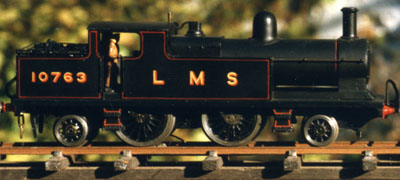
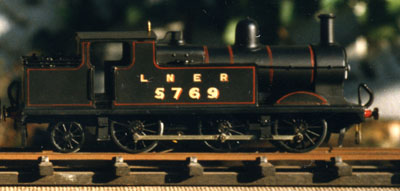 These six quite distinct models, of which the most commonly seen today are the LMS (Ex L&Y) 2-4-2T and the LNER (Ex GC) 0-6-2T, were economically engineered to come from a single set of tooling and dies. Moulded Bakelite coaches, wagons and vans were introduced in the late 1930’s and were an immediate success. The post WW2 years were difficult for all model companies, no less, with its focus on ‘0’ Gauge, for the LMC. Nevertheless the company moved boldly to introduce several new locomotives including standard 4-4-0 tender locos and a seventh series 2 standard tank configured as a short 0-6-0.
These six quite distinct models, of which the most commonly seen today are the LMS (Ex L&Y) 2-4-2T and the LNER (Ex GC) 0-6-2T, were economically engineered to come from a single set of tooling and dies. Moulded Bakelite coaches, wagons and vans were introduced in the late 1930’s and were an immediate success. The post WW2 years were difficult for all model companies, no less, with its focus on ‘0’ Gauge, for the LMC. Nevertheless the company moved boldly to introduce several new locomotives including standard 4-4-0 tender locos and a seventh series 2 standard tank configured as a short 0-6-0.  The models were designed for maximum cost reduction without undue sacrifice of realistic appearance. They were freely adapted to suit any of the big four companies and, later, BR prototypes. Train sets, both goods and passenger, were offered from the early 1950’s. Also from 1950, outworked locomotives, made by professional modellers, including an LMS Jubilee, GW Hawksworth County, GW 57XX Pannier and Prairie tanks, and even an LMS Princess, were also featured in the product range. These and all other ready to run locomotives ceased to be available after 1959. The product range was then more or less confined to spare parts and kits. Despite all efforts however, the company, by then trading as Ellemmsee products went into liquidation in 1967. Rex Stedman had passed away six years before.
The models were designed for maximum cost reduction without undue sacrifice of realistic appearance. They were freely adapted to suit any of the big four companies and, later, BR prototypes. Train sets, both goods and passenger, were offered from the early 1950’s. Also from 1950, outworked locomotives, made by professional modellers, including an LMS Jubilee, GW Hawksworth County, GW 57XX Pannier and Prairie tanks, and even an LMS Princess, were also featured in the product range. These and all other ready to run locomotives ceased to be available after 1959. The product range was then more or less confined to spare parts and kits. Despite all efforts however, the company, by then trading as Ellemmsee products went into liquidation in 1967. Rex Stedman had passed away six years before.
An Interesting Find
Full marks to Martin Dawes for pulling out from a box of miscellaneous wagons, this rare - if not unique - specimen of an early LMC open wagon. Giving a date to it is very difficult, but from the style and fittings it probably originates from around 1919 -1920, when fittings typical of those on the wagon were in production. One suggestion is that it was used as a promotional item at a time when prior to the introduction of the litho range, hand built wooden rolling stock was the only option available.
My good friends in the Dutch Hornby Railway Collectors Association also feature this wagon on the extensive Leeds Model Company section of their website, along with details of several other wagons - no examples of which we have in the archive!.
Most recently also details of early modifications to the LMC Bakelite open wagon mould have come to light and are shown further down in the same section of the website.
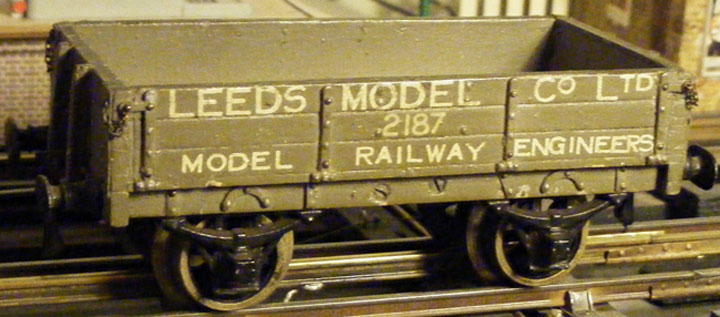
Be on your guard! (or on your guard’s van)
Life is full of surprises, and so are model railways. Having gone into print on so many aspects of the Leeds Model Company productions, I remain on my guard ready to be surprised - and wrong - on any one of them! This time I am indebted to my good friend Alan Cliff for uncovering the latest surprise in the post 1945 all metal long wheelbase brake van. I had been told and always believed without checking that this model was constructed throughout from tinplate. A common repair on the van is re-soldering of the roof tie, and that confirmed time and again that the roof is certainly tinplate. A friend had suggested to Alan that the vans were made from brass. A check with a magnet on the supposed ’brass’ van showed the roof and ends to be tinplate, but the sides were non magnetic. Nor is this a one-off. I have now checked the archive model and it is the same, an exploratory scratch on the inside of the van confirming - brass! The model depicted here also proved to be the same.
So, what are we to make of this discovery? The Leeds Model Company were ever driven to economise on materials and, after the brass framed mechanisms of the 1920s were replaced by the zinc die cast designs, brass was very little used. Having thought about it I believe that the answer lies in the forming of the ‘planking’ on the van sides. Producing the grooves by scoring on flat tinplate would remove the protective tin leaving the underlying steel vulnerable to corrosion. This would not be a problem for brass. Producing the grooves by pressing the tinplate - as is done on the short brake van, (A magnet test on this van shows it to be all tinplate), would require a relatively expensive press tool. The length of the long wheel base van’s sides might also be outside the capacity of the LMC’s presses. Either way the solution to use brass, and cut the planking grooves makes sense.
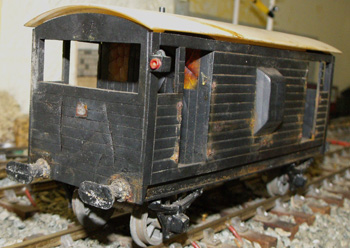 In my book on the Leeds Model Company I refer (page 54) to a moulded resin model of the long wheelbase brake van which I have in the archive, and shown here. This replicates exactly the dimensions of the metal van. One suggestion is that it represents an unsuccessful attempt by LMC to economise further by moving from the necessity to use brass and hand building of the metal model to the lower cost resin and less labour intensive assembly of a fully moulded vehicle. The lack of success is evident on the model, the van end and other areas of the resin breaking up during curing.
In my book on the Leeds Model Company I refer (page 54) to a moulded resin model of the long wheelbase brake van which I have in the archive, and shown here. This replicates exactly the dimensions of the metal van. One suggestion is that it represents an unsuccessful attempt by LMC to economise further by moving from the necessity to use brass and hand building of the metal model to the lower cost resin and less labour intensive assembly of a fully moulded vehicle. The lack of success is evident on the model, the van end and other areas of the resin breaking up during curing.
What is the correct explanation of all this? We shall probably never know, but remain on guard for the next revelation!
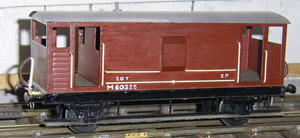
I am indebted to David Beveridge for further information on the long wheel base vans. His model shown here, with the exception of the duckets and axleboxes is wholly of tinplate construction. The ends clearly show they were press formed, and in effect closely resemble those of the short wheelbase van. Visual comparison strongly points to them being from the same tooling! The planking on the long tinplate sides is not so well expressed, suggesting that the end sections were separately pressed.
A remarkable record from 1939
Full marks to Pathe News for this fascinating look at the Leeds Model Company
in 1939 manufacturing Bakelite coaches and assembling locomotives. I am further
indebted to Peter Zwakhals of the Dutch HRCA,- very much an LMC enthusiast
himself, who brought this remarkable piece of archive material to my notice.
Enjoy!
We are indebted to John Bulmer and BAE Systems for the following pictures from the Brough Heritage Department 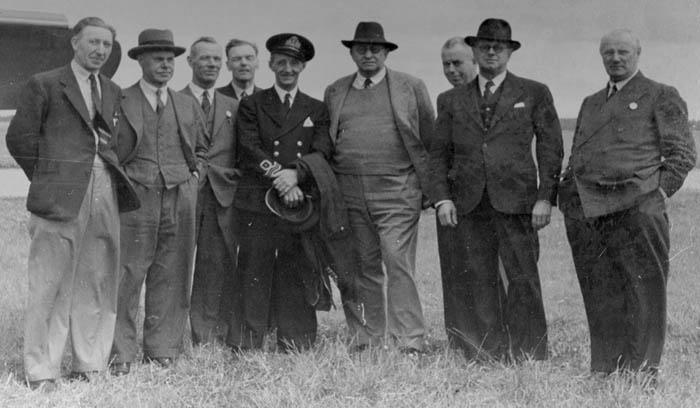
These show Rex Stedman as he was during the war, a test pilot for Blackburn Aircraft. Rex is at the left hand side of the group celebrating the 1000th repair aircraft out of Sherburn-in-Elmet where Rex was based.
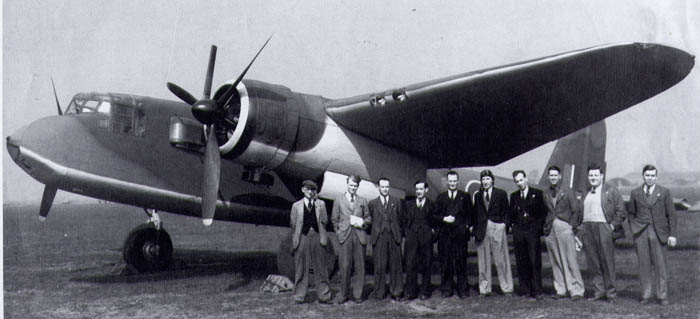
In the second picture Rex, (with flying helmet) with a group of engineers is about to test fly a Blackburn Botha, (an aircraft with a bad reputation for fatal accidents). Fortunately on this occasion all went well!"
‘Wooloomooloo’ back home.
After a 25,000 mile journey and over 6 months in the Leeds Stedman Trust workshops, the veteran K3 ‘Wooloomooloo’, originally shipped out to Australia with the Hordern layout in 1928 is back home! Here David Peacock, hands the loco over to Glyn Eden who continues with the restoration of the layout. With Wooloomooloo, we now have the full complement of the locomotives supplied to operate the layout. One of the two 0-4-0 saddle tanks the partner loco to ‘Milton’ is not however original. ‘Milton’ itself was restored and returned to the layout several years ago, but its original partner, if it has survived, has yet to be found. Along with the original locomotives we also have most of the original coaching stock and some of the goods vans and wagons. Gaps in the full original inventory, are gradually being filled from current purchases of original items as these come on to the market.
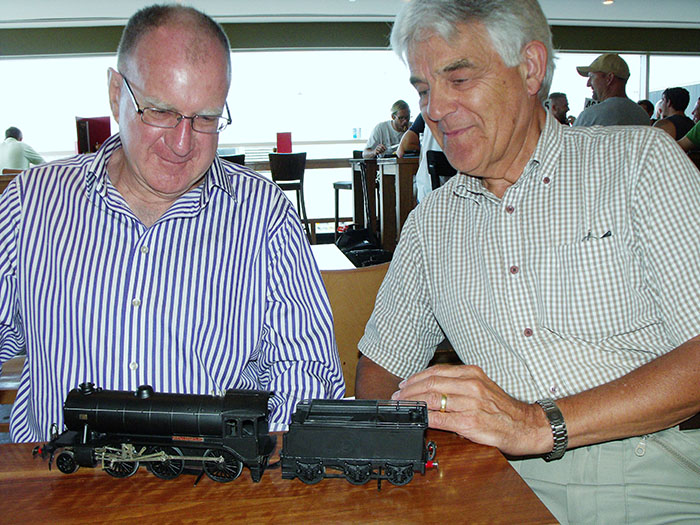
Back home - repratriation after 90 years away!
Shipped from England to Australia in 1928, Leeds Model Co , Gresley A1 Pacific loco, is back home to join the archive collection of the Leeds Stedman Trust. As the top link locomotive of the Hordern layout the A1, painted black and named ‘Sydney’, was lost for many years after the layout was sold off by its original owners. Recovered with the layout in 1985 by Bruce Macdonald, the loco was skilfully repainted in LNER livery by the late Bert Edwards, and given the number 4470, that of ‘Great Northern’, the A1 class leader, but nameplates were not fitted.
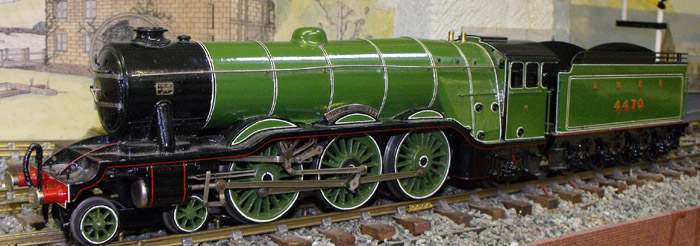
Standing now on the Trust layout the loco has a pair of original LMC brass nameplates, ‘Great Northern’ which came to the Trust with other of Rex Stedman’s large collection of parts of every description. Could these have been the very plates destined for this loco were it to have been sold in either GNR or LNER livery in England. Bruce Macdonald a most careful custodian kept the ‘Sydney’ plates and these accompanied the loco on its journey home.

Back in Australia research continues on the subject of the Hordern family, with some interesting recent revelations. The search continues for a suitable museum to house the layout, hopefully where it can be operated. More news on this topic later.
Hydrogen Powered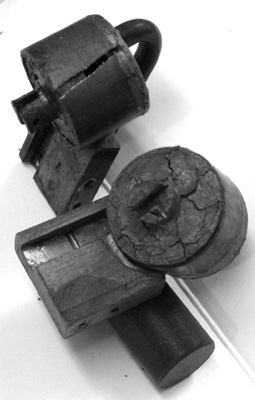
The swelling, embrittlement and cracking of early zinc alloys
used extensively in the model railway trade is sadly an all too familiar problem in early model locomotives and rolling stock. The problem arising from the use of less than pure or contaminated zinc is correctly termed 'intergranular corrosion'. Attack takes place preferentially at the metal's grain boundaries leading to swelling, cracking and disintegration before the bulk of the metal is affected. The effects are shown dramatically on these
Leeds Model Co. smoker-fitted locomotive cylinders. On the right, the intergranular cracking and swelling are clearly seen, the zinc positively bulging out of the end of the brass cylinder. On the left the piston was completely within the cylinder when disintegration began. The force of the expansion - largely caused by hydrogen, which is one product of the corrosion reaction, is sufficient to split the brass cylinder from top to base. In most cases the damage can be repaired and an aluminium piston fitted thus restoring the function of the smoker unit 'puffer'.
Switches for locos ....
The switch described under this intriguing heading in the LMC and R.F. Stedman catalogues from 1926 to 1939 has long escaped discovery. At last, and thanks to Barend Westerveld, I have a photo of the device attached to a Series 1 mechanism, and here it is.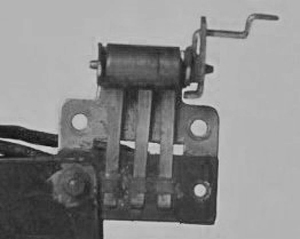
The switch is earthed to the motor frame and has three contacts, one from the current collector, thence to one the poles of the motor. The other pole is connected to the motor frame. A turn of the handle, seen on the right, moves the segmented contacts on the switch barrel to change the current from one pole to the other, at the same time connecting the other pole to the motor frame. Simple, but effective. How long will it be before an example of the series 2 switch turns up?
The catalogue describes the switch as a really useful addition, enabling, as it does, the mechanism to be switched off, or the direction of running reversed. This is handy if there are two locos on one section oftrack, or when double heading or banking when one loco is running tender or bunker first. From 1935 and from the introduction of the Series 2 motors, a new and more compact design was introduced.
Transition
The period from 1928 to 1935 was one of transition for the Leeds Model Company. Rex Stedman its founder had run the company under his own name until 1932, and it was left to his successor George Simpson to complete the transition from the Series 1 tank locomotives to the Series 2. Rex had started the essential changes when in 1927 he had produced an electric mechanism capable of fitting into a locomotive with a 1.½” (38mm) diameter boiler. The archive model of GWR 4-6-0 ’Caerphilly Castle’ when it arrived proved to be a surprise. It was still fitted with Series 1 frames but the motor was a Series 2.
Now a further example of the transition period has come to hand. This is a series 1 4-6-0T, fitted with full Series 2 frames and motor. As can be seen here the combined bevel and spur gear, at the top of the gear train, has teeth cut only where they are needed on the end portion of the gear body. On later gears the teeth were cut for the full length of the body up to the face of the bevel. The early frames and the motor front bearing all zinc alloy castings show no sign of deterioration, none of the familiar swelling and cracking on these! The zinc for these first batches must have been fresh, clean and pure! New coupling rods were required for the model, and these fitted and ran without any requirement to ease the crank pin holes or other modification whatsoever.
A surprising variation!
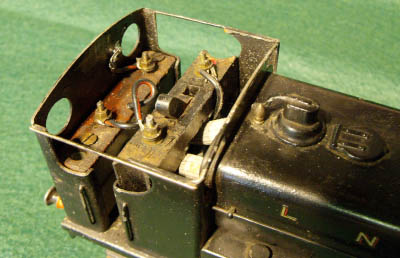 The LMC 0-4-0 saddle tank (the Donkey) was one of the longest lived models in the Company range, in production from 1920 to the mid 1950s. In that time there were more than a few changes to the model, but here is one I have never previously seen.
The LMC 0-4-0 saddle tank (the Donkey) was one of the longest lived models in the Company range, in production from 1920 to the mid 1950s. In that time there were more than a few changes to the model, but here is one I have never previously seen.
The roof on a smoker fitted model attached by clips, with wires soldered to the cab sides to support the roof edges. The usual format has the roof sliding into folded guide bars, so how many Donkeys were made like the one seen here? There is little doubt this is an original item, the transfer if poorly applied over the clip is the witness to this. 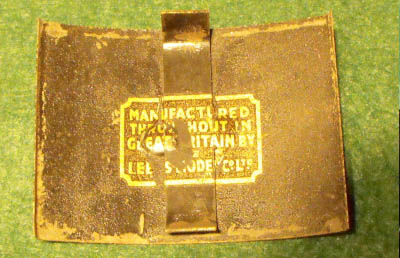
Another variation
Over the years we have had many of the Leeds 0-4-0 saddle tanks - the donkeys - pass through our hands. Here however is a variant never seen before. The bold ‘LMC’ transfer suggests that it may have been a works modification but…?
The smoker oil tank is fitted firmly to the rear of the cab by the four screws visible in the picture. The tank is filled with oil via the screw plug. The on/off switch is set firmly into the top of the smoker unit and is accessed through the enlarged single rear window. The whole job is neatly done. The cab roof, which does not need to be removed, is integral with the body and has two ridges.
So is this a customer or a works modification? Has anyone else seen the like elsewhere?
A Lucky Escape!!
Rex Stedman built only two models of the LNER K 3 2-6-0 locomotives. One was for Frederick Rush, the other went to Australia with the Hordern layout. Today the Hordern loco, rescued by chance from a junk shop, is restored and back in Australia. The other K3 had an even luckier escape, before it ended up in the Trust archive.
I am indebted to Bill Truin for bringing an article in the Model Railway News (1953) to my attention. In it, Frederick Rush writes of his 0 gauge LNER models and in particular mentions the K3, which he had last illustrated in the magazine in 1937. He writes, “ This model was the only one of my pre-war stock to survive the Bristol blitzes and, as a reward, has been provided with a chimney more like that of the prototype than was the original; it is still clockwork, but is scheduled to be rebuilt and fitted with an electric mechanism and fine scale wheels as soon as time permits.
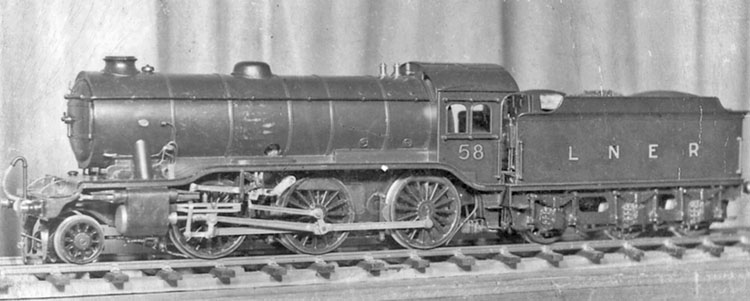
The loco was certainly re-motored with a Bonds mechanism, but kept its standard scale wheels. It is now skated for stud contact and operated regularly for visitors to the Trust layout. A lucky escape indeed, and perhaps the small dent on the boiler is after all due to bomb damage, not careless handling!
Signals

Signals were among the first products of the Leeds Model Company from 1912 onwards. In his introduction in catalogues for 1920 onwards, Rex Stedman emphasised the importance of signalling on a model railway saying ‘The completeness and accuracy to which the line is signalled depends upon the owner’. My good friend and neighbour Peter Sapte who skilfully rebuilt the LMC super detail signal shown here has a fine 4mm scale layout which is very properly signalled. The picture of the LMC 1922 layout shown here earlier this year, like more modern layouts featured in the model press, - and despite Rex Stedman’s protestations - has a signal placed just outside a tunnel mouth - quite impossible for the driver to see! Peter comments ‘ Signals are to tell the driver what he can and cannot do. The main requirement therefore is that a signal must be seen at the earliest opportunity. Placing of signals is thus of the utmost importance. How many layouts featured in published articles have signals placed just beyond bridges/ tunnels and other obstructions? Once a photo is taken and in print the critical eye has plenty of time to judge such mistakes. Back to that 1922 drawing board, and also always see that the signal board is truly horizontal in the stop position!
